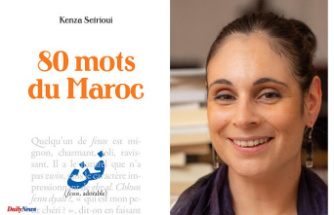The doctoral thesis of Pedro Bibiloni developed several image processing algorithms to extract information from photographs biomedical, useful as an aid in the diagnosis of various pathologies
So vague, so imprecise, the gray scale goes from black to white or intermediate states seem to be irreconcilable, in principle, with the math, a science that we believe are accurate, so to find it accompanied by adjectives such as blurred, it is at least shocking.
Generally, the human form opinions and decide from imprecise, the concepts that we tend to be vague, "Yes, but..." we are in different scales because we have difficulties to quantitatively define elements that differ from each other by shades "Is hot enough... ". "Don't live too far away... ". The logical or mathematical fuzzy, also known as a fuzzy (fuzzy logic), has made it possible to treat complex problems, ill-defined or for which there are no mathematical models to be accurate, opening an avenue to treat them scientifically. It is a discipline that recent -the engineer Lofti Zadeh described for the first time in 1965 in his article the fuzzy Sets - and its goal was to create a formalism which enable it to handle more efficiently the imprecision of human reasoning. His methodology has made it possible for a computer to analyze information from the real world on a scale between the false and the true, the driving concepts are vague, as humans do.
In practice, its applications are innumerable and, in the last few decades, the rules-based systems of fuzzy logic have been employed on appliances, air conditioners, vehicles, video cameras, machinery, industrial or computer technology, generating thousands of patents and demonstrating the importance of quantifying the imprecision.
One of the fields in which this discipline is achieving significant advances is image processing. It is No coincidence that the term fuzzy comes from the photographic language and make reference to the images blurred and diffuse, in which the contours are ill-defined.
In the field of medicine, specifically the photography biomedical, is part of the doctoral thesis of Pedro Bibiloni Serrano, Curvilinear Object Detection with Fuzzy Mathematical Morphology for Grayscale and Color Medical Imagery, defended at UIB, in which it carries out various image processing algorithms to extract information from photographs biomedical, with the aim of they can be helpful in the diagnosis of different pathologies.
"I joined four years ago the group Soft Computing, Image Processing, and Aggregation (SCOPIA) of the UIB, which includes the techniques of fuzzy logic," says Villanueva, "had studied math and engineering in the CIFS, a centre of the Polytechnic University of Catalonia and, when I came to Mallorca, Sebastià Massanet and Manuel Gonzalez, my thesis directors, I proposed a project to work on with the processing of medical image, that combines the mathematics with the development of applications that can be deployed in the real world.
Currently, the group SCOPA is part of the Healthcare Research Institute, Illes Balears (IdISBa), participates in some projects and they are looking to improve the partnership".
"In the thesis development two applications, on the one hand, the segmentation of the vascular network in images of the retina, which is of interest for the diagnosis of glaucoma or diabetic retinopathy, and on the other, the elimination of hairs in images of skin lesions, as a previous step to improve the detection of these lesions, including melanomas," he adds.
"We do processing of images which, basically, is to create algorithms to extract information from the photographs or to transform a certain way," explains Villanueva. "Although this is currently very much in vogue deep learning (learning machines), and let the computers learn alone and at the end give a result, what we do is different, we seek to create algorithms that are interpretable and for this we use operators of what is called mathematical morphology fuzzy".
"In medicine, the systems of deep learning are rarely used because it cannot be interpreted on the inside, they are like a black box that tells you a result, but it is not known very well how the machine has come to that conclusion. In general, do not have good acceptance among medical professionals, who are looking for something that will help them in the diagnosis, not replace them", explains Villanueva.
In the first application has segmented the vascular network in images of the retina; when the eye doctor examines this part of the eye is fixed on it all in some features, if you see many red dots, they may be indicative of a pathology, if in a place that appreciates a lot of blood vessels together or that they are broken and are difficult to identify, may be a sign of other diseases; are tracks, and the in-depth study of the images can help physicians.
"from images of databases established, what we have done is to see if we could apply the algorithms created with morphology and fuzzy logic to extract the vascular network of the retina and, once upon a time we had, taking out their features, to see if the number of branches, and red spots isolated was exceptionally high or not, or if there were large regions completely red that could be interpreted as a hemorrhage," he reports. "The idea is to try to extract information and be able to discern if there is a certain pathology or not. Depending on the pathology is present or not, appear a few indexes, or other in the images. It is a first step, the ultimate goal is the creation of a system of aid to the diagnosis".
The application related to the image dermatoscópica consists of a filtering, in particular, in the elimination of hairs in the photographs of skin lesions. There are algorithms that are looking for what is the limit of an injury, to see if it is symmetric, if it has edges regular, or if you have increased your size, but many times fail in the presence of hair, because they confuse the hair with the injury. "We realized that a strategy similar to the one that we had used in the study of the blood vessels, could be also used in the detection of hairs, which are objects with curvilinear, and remove them from the image. This algorithm allows you to see the injury more easily, because it cleans up the image, leaving it sharper", it indicates Bibiloni.
In both cases, we employed operators of a mathematical tool, the mathematical morphology fuzzy, to transform color images. These are operators interpretables, which is a key advantage for the design of systems to aid in the diagnosis to provide information to the physician.
Perhaps the medicine is one of the areas that best reflects the uncertainty, diagnostics, doubtful, different assessments clinics or different opinions of the experts, and this is perhaps one of the reasons the contributions made from the fuzzy logic can be of great utility. In this context, technology is used as a tool and not as a mechanism of automation, and, undoubtedly, the decision of a doctor will always be far above the of the automatic algorithms. A wrong diagnosis may be detrimental, but both the patient and the doctor prefer that the decision be justified from the latter to that of a system whose inner mechanism of work can be opaque.
According to the criteria of
Learn more Date Of Update: 18 November 2018, 08:00











